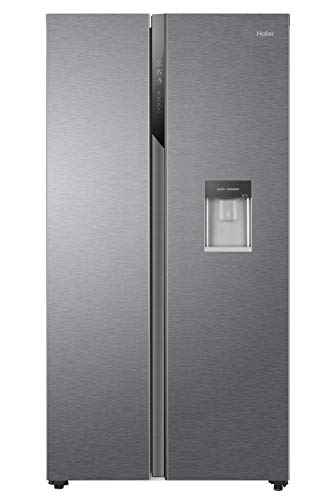Understanding Fridges and Freezers: The Essential Kitchen Appliances
Fridges and freezers are 2 of the most essential devices in modern-day kitchen areas. These devices serve an essential role in food preservation and waste reduction by guaranteeing that perishable products remain fresh and safe for intake. This short article explores the different kinds of fridges and freezers, their performances, and essential considerations for choice and maintenance.
Kinds of Refrigerators
The marketplace offers a range of refrigerator types, each designed to meet various consumer requirements. Below is a list of the most common kinds of fridges:
Top-Freezer Refrigerators
- Most typical type.
- Freezer compartment lies above the refrigerator area.
- Typically more budget-friendly and energy-efficient.
Bottom-Freezer Refrigerators
- Freezer is situated at the bottom.
- Allows much easier access to fresh products at eye level.
- Often features pull-out drawers for better company.
Side-by-Side Refrigerators
- Refrigerator and freezer sections are adjacent.
- Ideal for narrow kitchen areas and enables simple access to both compartments.
- Often comes with water and ice dispensers.
French Door Refrigerators
- Integrates a bottom freezer with double doors at the top.
- Offers ample storage and stylish styles.
- Often consists of functions like temperature-controlled drawers.
Compact Refrigerators
- Smaller sized size ideal for restricted spaces.
- Commonly utilized in dorm spaces, studio apartments, or as secondary fridges.
Table 1: Comparison of Refrigerator Types
| Type | Benefits | Drawbacks | Common Size |
|---|---|---|---|
| Top-Freezer | Inexpensive, energy-efficient | Less practical access to the freezer | 14-30 cu. ft. |
| Bottom-Freezer | Much easier access to fresh food | Freezer can be harder to organize | 19-30 cu. ft. |
| Side-by-Side | Easy access, water/ice dispenser | Narrow vs. storage area | 22-30 cu. ft. |
| French Door | Trendy, spacious, organized | More costly | 20-30+ cu. ft. |
| Compact | Space-saving, portable | Limited storage | 1.7-5.5 cu. ft. |
Types of Freezers
Freezers are a similarly essential device for food preservation. They are available in various designs developed to fit various home needs. Consider the following types:
Upright Freezers
- Operate like a basic refrigerator with vertical storage.
- Much easier to arrange with shelves and compartments.
Chest Freezers
- Big, horizontal style generally providing more storage area.
- Maintains temperature levels much better throughout power failures.
- More energy-efficient than upright designs.
Portable Freezers
- Compact units ideal for outside activities or little spaces.
- Typically utilized for camping journeys or as short-term storage.
Table 2: Comparison of Freezer Types
| Type | Benefits | Downsides | Normal Size |
|---|---|---|---|
| Upright Freezer | Easier to arrange | Less energy-efficient, more floor space | 5-20 cu. ft. |
| Chest Freezer | Holds more items, energy-efficient | Harder to arrange | 5-25 cu. ft. |
| Portable Freezer | Compact and flexible | Restricted storage capability | 1-10 cu. ft. |
Key Features to Consider
When picking a fridge or freezer, consumers need to bear in mind numerous features that can enhance performance:
- Energy Efficiency: Look for models with the ENERGY STAR certification to save money on electrical power expenses.
- Storage Capacity: Evaluate storage requirements based on family size and consuming practices.
- Temperature Control: Some home appliances use digital controls for accurate temperature level settings.
- Adjustable Shelving: Customizable shelving enables optimum company.
- Water and Ice Dispenser: Offers convenience however can take up valuable space inside.
- Sound Level: Sound ratings can affect comfort, especially in open-concept homes.
Benefits and drawbacks of Having a Fridge and Freezer
While fridges and freezers are important innovations, they likewise have specific benefits and disadvantages:
| Pros | Cons |
|---|---|
| Preserve food life expectancy and reduce waste | Need routine maintenance |
| Allow bulk purchasing and meal prepping | Can be costly to purchase and run |
| Offer convenience and quick access to food | Inhabit considerable kitchen space |
Upkeep Tips
To guarantee longevity and optimal efficiency of fridges and freezers, think about the following upkeep ideas:
- Regular Cleaning: Clean the exterior and interior occasionally to prevent accumulation of dirt and bacteria.
- Check Seals: Inspect door seals regularly for leaks to maintain efficiency.
- Temperature Settings: Keep the fridge at 34-38 ° F and the freezer at 0 ° F for optimum food preservation.
- Defrost as Needed: Chest freezers should be defrosted regularly to maintain performance.
- Clear Air Vents: Ensure that air flow isn't blocked to enhance energy efficiency.
Frequently asked questions About Fridges and Freezers
Q1: How long can food be kept in a freezer?A: Most foods can be kept in a freezer for several months. Meats and poultry often last 4-12 months, while veggies can last as much as 8-12 months.
Q2: How often should I clean my fridge and freezer?A: It is advisable to clean your fridge and freezer every 3 to 6 months, or as required when spills occur. Fridges For Sale : Can I put hot food directly in the fridge?A: It is recommended to cool hot food to room temperature before positioning it in the fridge to prevent
raising the temperature inside the home appliance. Q4: Why is my fridge running constantly?A: This might be due to a malfunctioning thermostat, clogged coils, or door seals that aren't working correctly. Fridges and freezers are invaluable
properties to contemporary families, providing necessary services for food storage and conservation.
Understanding the various types, functions, and maintenance requirements can assist customers pick the ideal home appliances for their needs and optimize their performance. Welcoming energy-efficient models not only supports sustainable practices but likewise contributes to significant cost savings on utility bills, making notified options more important than ever.

